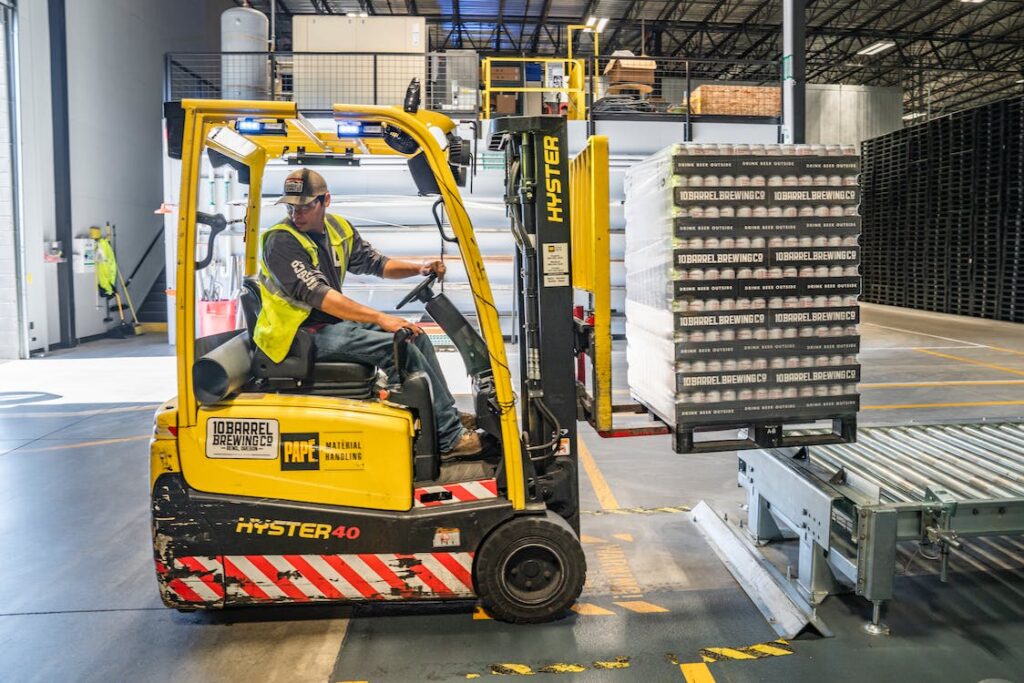The construction landscape in Australia is diverse and richly textured, shaped by a federation that grants individual states and territories the authority to establish and modify building codes and regulations. This patchwork of regulations, while providing tailored solutions to regional needs, also presents a myriad of challenges for those operating across multiple jurisdictions in the construction industry.

Understanding the Diverse Landscape of Building Codes
The National Construction Code (NCC) serves as the cornerstone of Australia’s construction industry, providing a comprehensive framework for ensuring the safety, durability, and sustainability of buildings. This code, although serving as a national standard, is adapted and interpreted diversely across the country’s various states and territories. It acts as a foundational guideline upon which each region builds its legislative framework, tailoring the code to address specific environmental, social, and economic needs unique to their locality. This localization of the NCC reflects the intricate tapestry of Australia’s geographical and climatic diversity, acknowledging that what works in one region may not necessarily be optimal or practical in another. Consequently, these modifications introduce nuances and variations in compliance requirements, adding layers of complexity to construction projects undertaken across different jurisdictions.
Variations in Building Codes
Queensland: Queensland, often dubbed “The Sunshine State,” grapples with the ever-present threat of cyclones, especially in its northern regions. In response to the recurring challenges posed by these powerful storms, Queensland has established stringent building codes that emphasise the paramount importance of cyclone-resistant construction.
These regulations serve as a bulwark against the devastating impact of cyclonic weather systems, prioritising not just the strength but the resilience of structures. In the northern reaches, where the frequency and severity of extreme weather events are notably higher, the building codes place an acute emphasis on bolstering structural integrity. Engineers and architects working in this region are tasked with designing and constructing buildings capable of withstanding the relentless forces unleashed by cyclones, safeguarding lives and property against the fury of nature’s tempests.
These codes demand meticulous planning, rigorous testing, and the implementation of cutting-edge technologies and materials to fortify buildings against the formidable forces of cyclonic winds and torrential rains. Compliance requires a meticulous attention to detail, ensuring that every element, from the foundation to the roof, is meticulously crafted to endure the onslaught of these natural phenomena, underscoring Queensland’s commitment to protecting its communities against the impact of cyclones.
New South Wales: New South Wales (NSW), a bustling hub of urban innovation and development, anchors its building codes firmly within the realm of sustainability. This steadfast commitment to sustainable practices is a response to the growing imperative to mitigate environmental impact while accommodating rapid urban expansion. NSW’s building regulations extend far beyond mere compliance, embracing a holistic approach that prioritises energy efficiency, water conservation, and the integration of sustainable building methodologies.
These regulations act as a blueprint, guiding architects, engineers, and builders toward creating structures that harmonise with the environment. Energy-efficient designs incorporating smart technologies, passive heating and cooling systems, and renewable energy sources are encouraged to minimise carbon footprints. Water conservation measures, including rainwater harvesting, greywater recycling, and the use of drought-resistant landscaping, underscore the state’s resolve to preserve this precious resource.
Furthermore, the emphasis on sustainable building practices encompasses the sourcing of eco-friendly materials, minimising waste through recycling and reuse, and implementing green construction techniques. NSW’s regulations not only set benchmarks for environmental stewardship but also foster innovation and creativity within the construction industry, pushing boundaries to create a landscape where sustainable, eco-conscious structures flourish amidst the urban sprawl. This concerted effort aligns with NSW’s vision of creating livable, resilient, and environmentally responsible urban spaces that thrive symbiotically with their surroundings.
Victoria:
Victoria, a state steeped in rich heritage showcased through its architectural marvels and vibrant urban landscape, meticulously balances preservation with progress within its building codes. At the heart of Victoria’s regulatory framework lies a profound dedication to safeguarding its historical legacy while adhering to contemporary safety standards. These codes are carefully crafted to strike a delicate equilibrium, ensuring the conservation and restoration of heritage buildings while integrating cutting-edge safety measures.
Preservation efforts encompass meticulous restoration techniques, utilising specialised materials and methods to retain the authentic charm of historical structures while fortifying them against the tests of time. The codes not only outline guidelines for the protection of iconic landmarks but also extend their purview to encompass the broader urban fabric, encouraging the preservation of neighbourhoods steeped in cultural significance. Moreover, Victoria’s commitment to safety transcends heritage preservation.
In areas prone to bushfires, the codes place an acute emphasis on bushfire-resistant construction methodologies. Structures erected in these fire-prone zones are mandated to incorporate design elements and materials that bolster resilience against the ferocity of wildfires, ensuring the safety of inhabitants and properties in the face of such natural calamities. This multifaceted approach within Victoria’s building codes reflects a nuanced understanding of the state’s historical treasures, embracing innovation to safeguard the past while fortifying against the challenges of the present and future.
Western Australia:
Western Australia (WA), characterised by its expansive and diverse landscape encompassing arid deserts, coastal stretches, and varied terrain, necessitates a nuanced approach within its building codes to cater to these contrasting environments. The regulations governing construction in WA are a testament to the state’s recognition of the unique challenges posed by its diverse topography. From the sun-scorched deserts to the rugged coastal regions, these codes are designed to accommodate the spectrum of soil compositions and geological characteristics prevalent across the state.
The meticulous guidelines delineate construction methodologies tailored to suit specific soil types, addressing issues related to stability, drainage, and foundation integrity. Additionally, WA’s seismic activity, albeit less frequent than in some other regions, remains a consideration in building regulations. These codes incorporate provisions for seismic-resistant construction techniques, ensuring that structures are equipped to withstand the potential impact of seismic events, however rare they may be. Moreover, the regulations go beyond mere compliance, advocating for sustainable practices that respect the delicate ecological balance inherent in WA’s diverse landscapes.
This holistic approach encompasses not only the structural integrity of buildings but also their ecological footprint, promoting designs and materials that minimise environmental impact. The adaptability and foresight embedded within WA’s building codes underscore the state’s commitment to responsible and resilient construction practices, harmonising with the natural elements of its expansive and varied terrain.

South Australia:
South Australia (SA), renowned as a global leader in sustainable living and environmental stewardship, has established building codes that serve as a beacon for promoting a greener, more eco-conscious construction industry. At the core of these regulations lies a steadfast commitment to fostering a culture of environmental responsibility and sustainability. SA’s codes transcend mere compliance; they serve as a catalyst for change, advocating for innovative approaches to construction that prioritise the integration of renewable energy sources.
These codes incentivize and mandate the incorporation of solar panels, wind turbines, and other renewable energy systems into building designs, reducing reliance on non-renewable resources and lowering carbon footprints. Furthermore, SA’s commitment extends beyond energy to encompass all facets of construction, emphasising eco-friendly materials, green building practices, and designs that minimise environmental impact. The regulations encourage the use of recycled and locally sourced materials, sustainable insulation, and water-saving fixtures to create buildings that not only meet functional requirements but also champion sustainability. SA’s building codes, therefore, serve as a blueprint for fostering a holistic approach to construction, where environmental considerations are seamlessly woven into every aspect of the building process, nurturing a culture of environmental awareness and responsibility among builders, architects, and residents alike.
Tasmania: With a focus on preserving its natural beauty, Tasmania’s codes revolve around environmentally responsible construction, protecting landscapes, and minimising ecological impact.
Northern Territory: NT’s codes prioritise designs and construction methods suitable for tropical climates, requiring structures to withstand extreme heat and humidity.
Australian Capital Territory (ACT): ACT’s focus on sustainability drives codes that encourage innovative and energy-efficient building designs, aligning with the region’s commitment to green initiatives.
Navigating Compliance Challenges
The complexity arising from these variations presents several challenges for stakeholders operating in the construction industry across multiple states.
Compliance Costs: Adhering to diverse regulations across states can significantly escalate project expenses. Builders must account for multiple certifications, materials, and design alterations, driving up costs.
Knowledge and Expertise: Staying updated with the ever-evolving codes in various regions demands a robust understanding of local regulations. This necessitates investing considerable time and resources in ongoing education and training.
Project Delays: Differences in compliance requirements can lead to delays in project timelines as adjustments are made to align with specific codes, impacting overall project schedules.
Resource Availability: Materials and construction methods compliant in one state might not meet criteria in another, requiring builders to source alternatives and adapt their processes accordingly.
Strategies for Navigating Compliance Challenges
Engage Local Expertise: Collaborating with local architects, engineers, and consultants well-versed in regional codes is crucial. Their expertise ensures compliance from the project’s outset, reducing complexities later on.
Continuous Education and Training: Investing in ongoing education and training programs for staff to stay updated with changes in various building codes is essential to maintain compliance.
Standardisation and Harmonization: Identifying commonalities among codes and implementing standardised practices where possible can streamline compliance efforts across multiple jurisdictions.
Early Engagement with Regulatory Bodies: Initiating discussions with regulatory bodies and local authorities at the project’s outset can provide insights into specific compliance requirements, facilitating smoother project execution.
Technological Integration: Leveraging technology, such as Building Information Modeling (BIM), can streamline design and construction processes, ensuring compliance across states by allowing for easier adaptations and adjustments.
The intricate web of state-by-state variations in building codes in Australia demands a comprehensive understanding of diverse regulations. These variations present both challenges and opportunities for the construction industry. By embracing a proactive approach, engaging local expertise, investing in education, standardising practices, and leveraging technology, stakeholders can navigate compliance challenges more effectively. This strategic approach ensures the successful execution of construction projects across the country’s varied regulatory landscape, fostering innovation and adaptation within the industry.
A good construction software makes use of good project management functionality, estimate and financial/accounting tool functionality, job management, scheduling and planning and support functionalities and more. WunderBuild is a construction management software that aims to provide all of these functionalities and more to bring out the best outcomes for a project. Enquire here today, to learn more about Wunderbuild and start your free trial.



